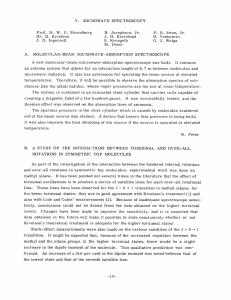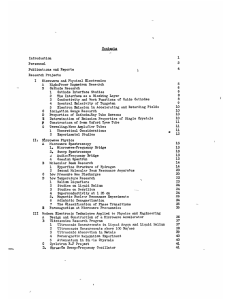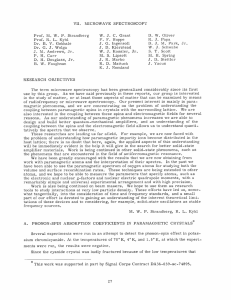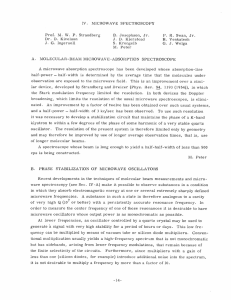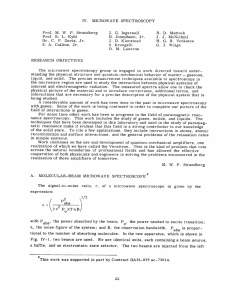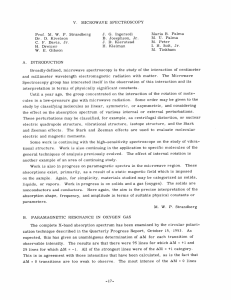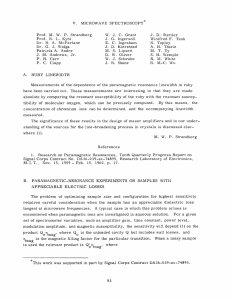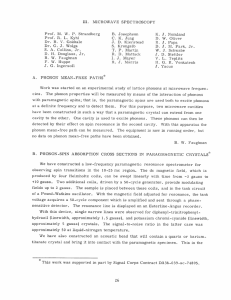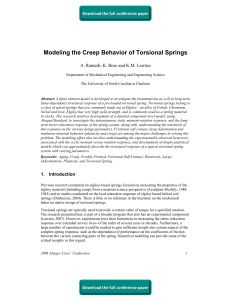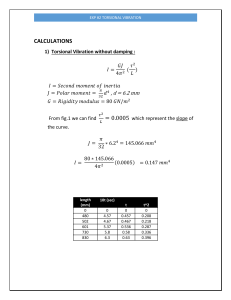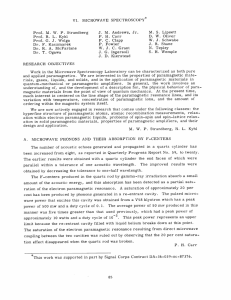IV. MICROWAVE SPECTROSCOPY Strandberg J. D. Kierstead
advertisement
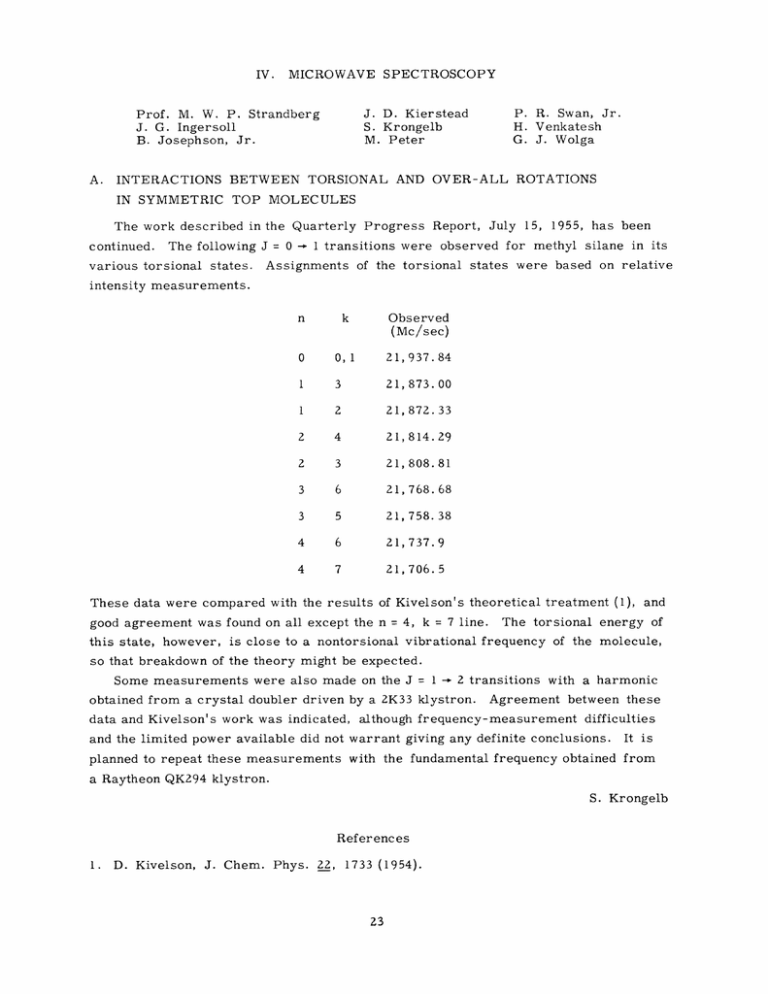
IV. MICROWAVE J. D. Kierstead S. Krongelb M. Peter Prof. M. W. P. Strandberg J. G. Ingersoll B. Josephson, Jr. A. SPECTROSCOPY P. R. Swan, Jr. H. Venkatesh G. J. Wolga INTERACTIONS BETWEEN TORSIONAL AND OVER-ALL ROTATIONS IN SYMMETRIC TOP MOLECULES The work described in the Quarterly Progress Report, July 15, continued. The following J = 0 -. various torsional states. 1955, has been 1 transitions were observed for methyl silane in its Assignments of the torsional states were based on relative intensity measurements. n k Observed (Mc/sec) 0 0, 1 21,937.84 1 3 21,873.00 1 2 21,872.33 2 4 21,814.29 2 3 21,808.81 3 6 21,768.68 3 5 21,758.38 4 6 21,737.9 4 7 21,706.5 These data were compared with the results of Kivelson's theoretical treatment (1), good agreement was found on all except the n = 4, this state, however, k = 7 line. and The torsional energy of is close to a nontorsional vibrational frequency of the molecule, so that breakdown of the theory might be expected. Some measurements were also made on the J = 1 - 2 transitions with a harmonic obtained from a crystal doubler driven by a 2K33 klystron. data and Kivelson's work was indicated, Agreement between these although frequency-measurement difficulties and the limited power available did not warrant giving any definite conclusions. It is planned to repeat these measurements with the fundamental frequency obtained from a Raytheon QK294 klystron. S. Krongelb References 1. D. Kivelson, J. Chem. Phys. 22, 1733 (1954). (IV. B. MICROWAVE SPECTROSCOPY) PARAMAGNETIC RESONANCE The paramagnetic resonance spectrograph is being adapted for high-frequency magnetic modulation. The resonant microwave cavity has been fitted with modulation coils for magnetic field modulation within the cavity. G. J. Wolga
